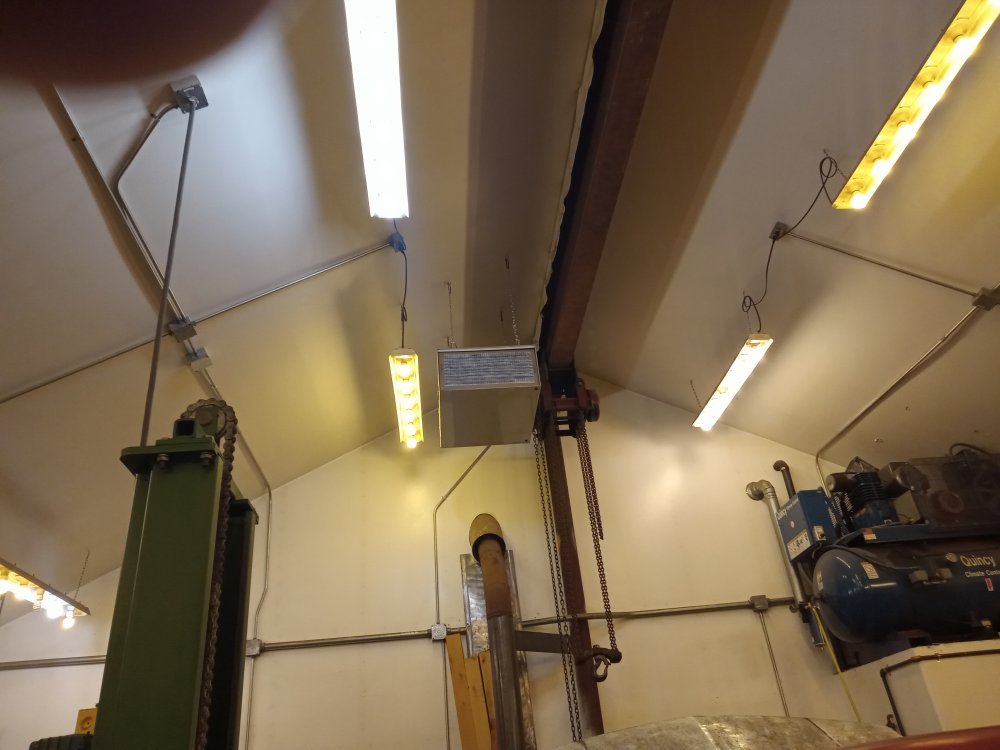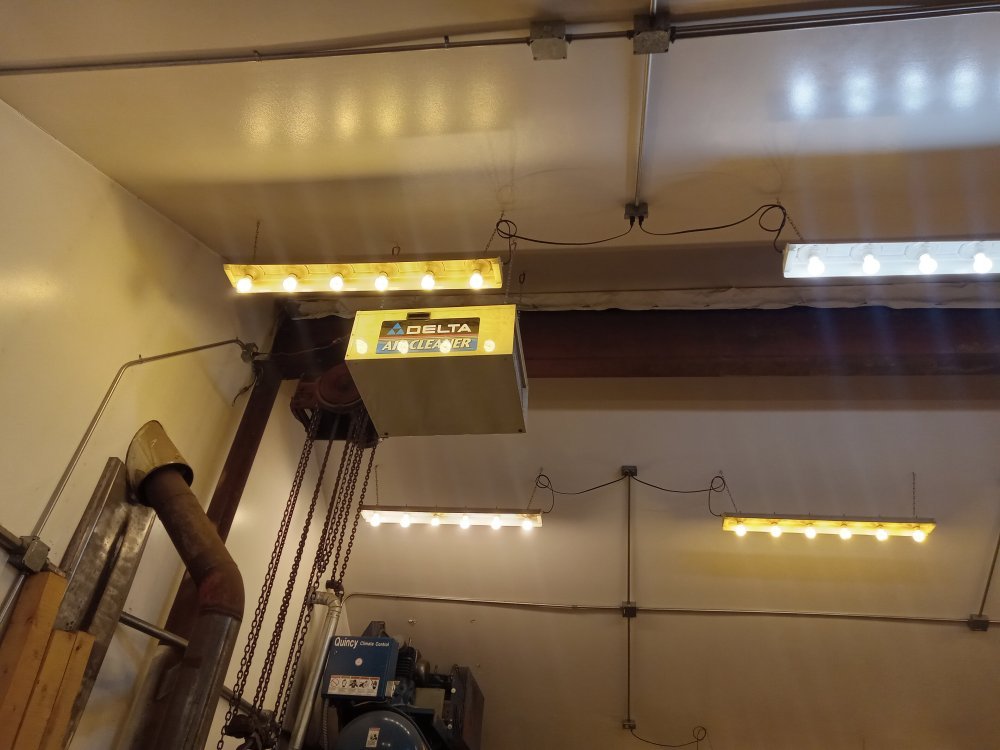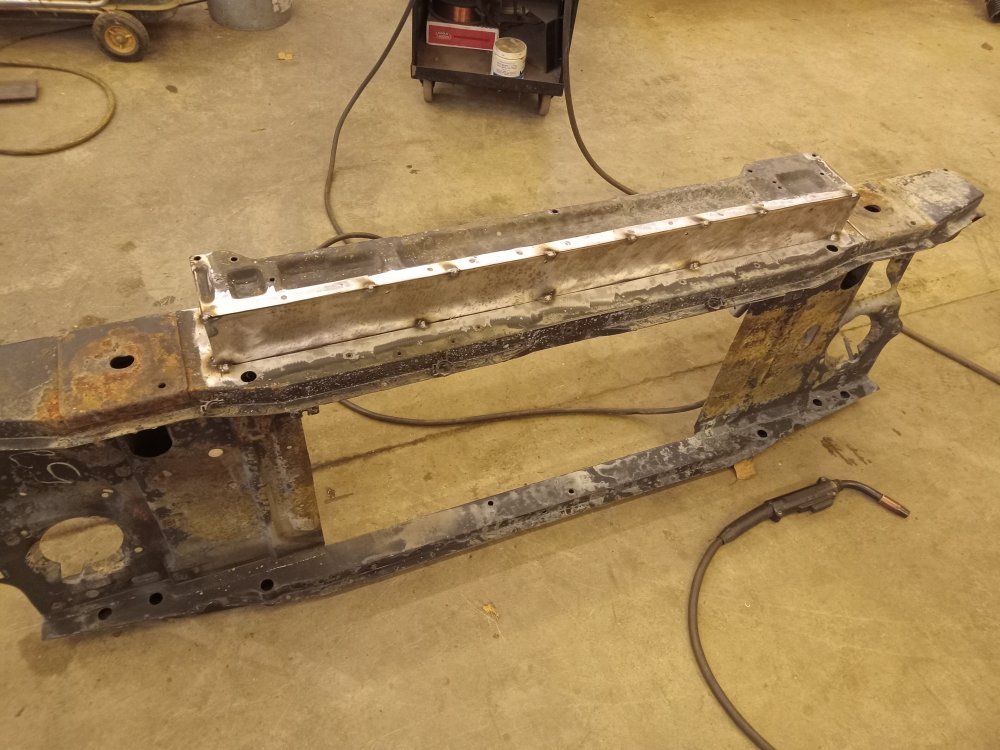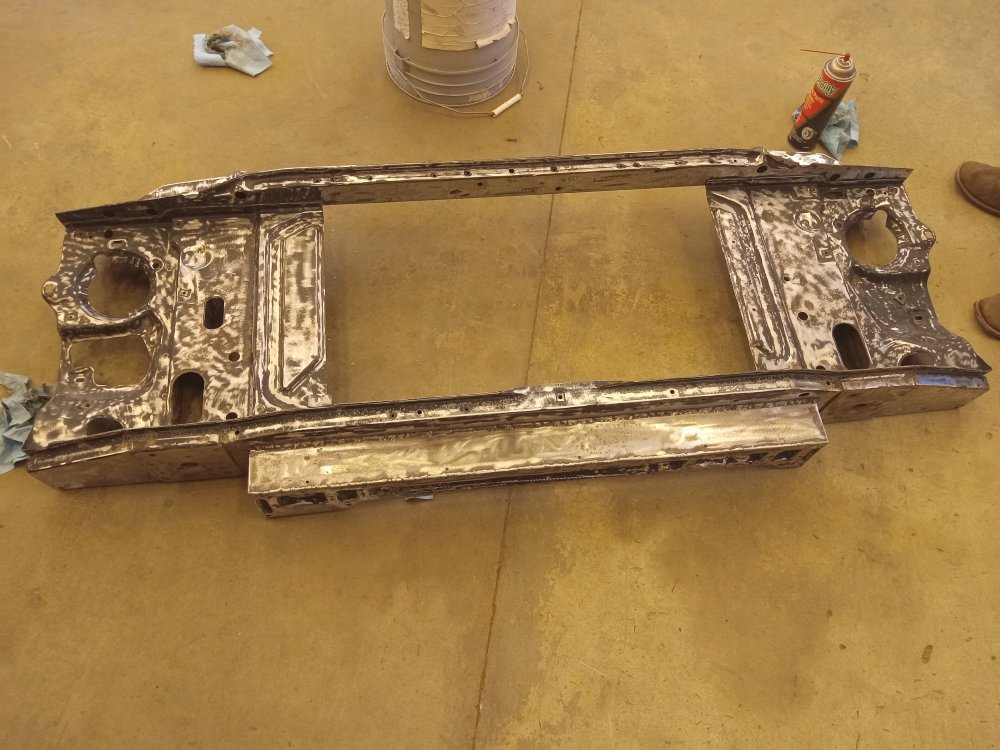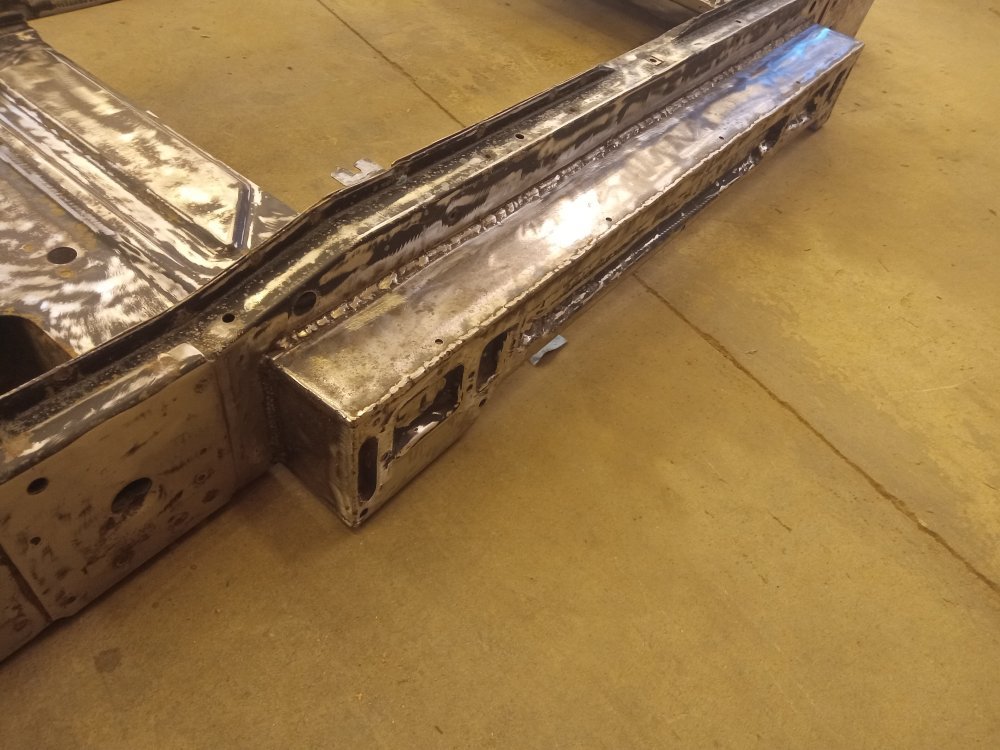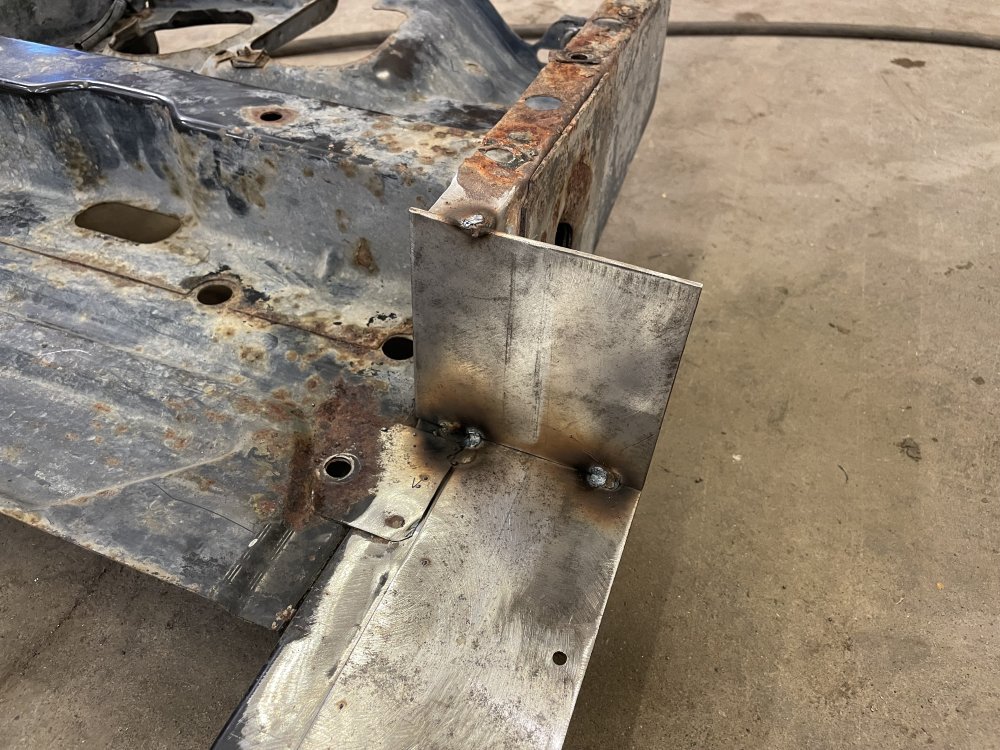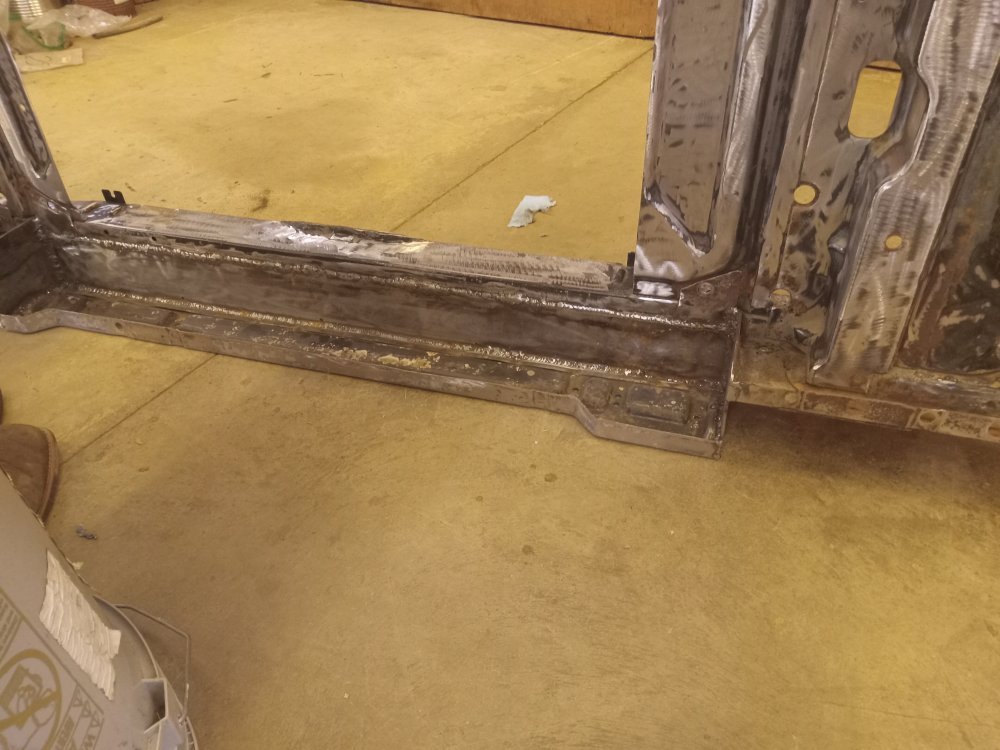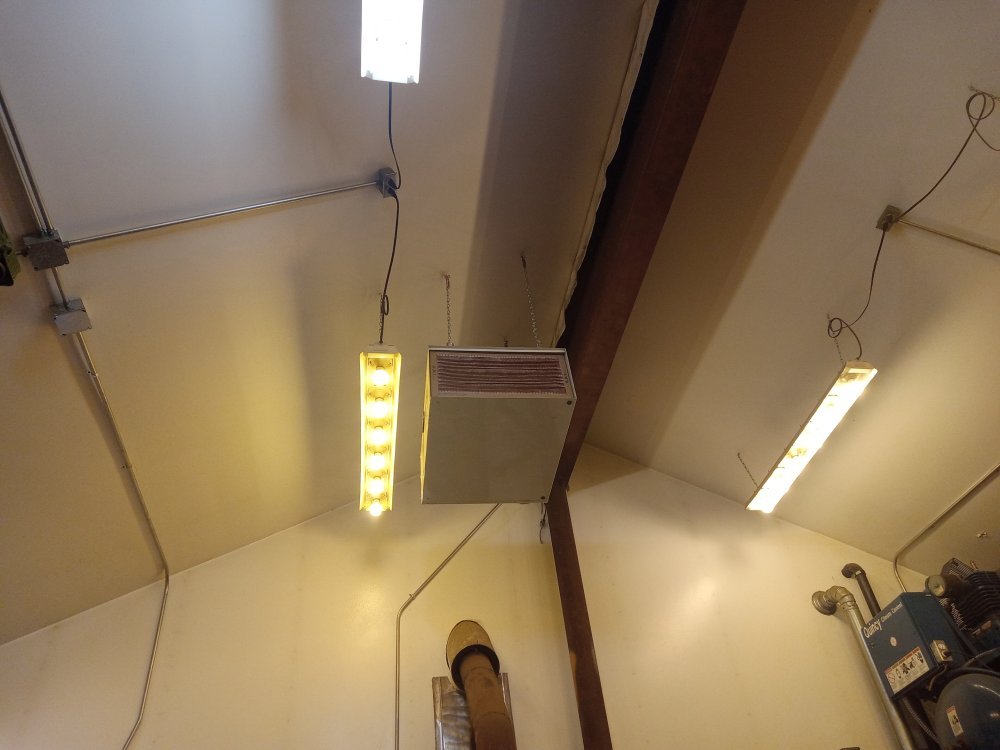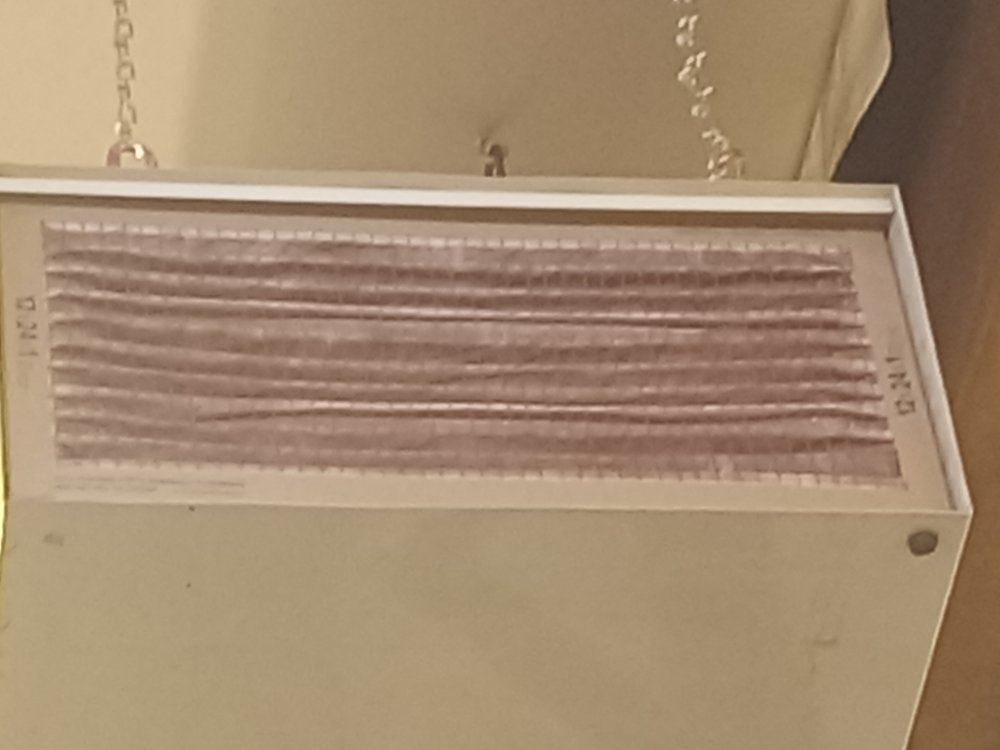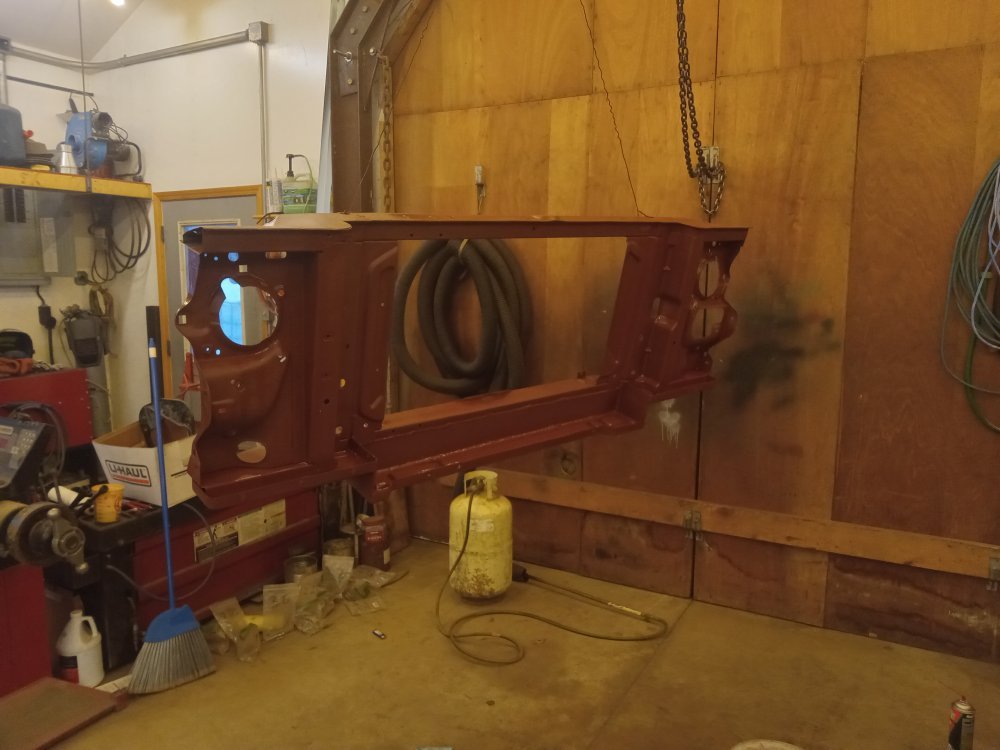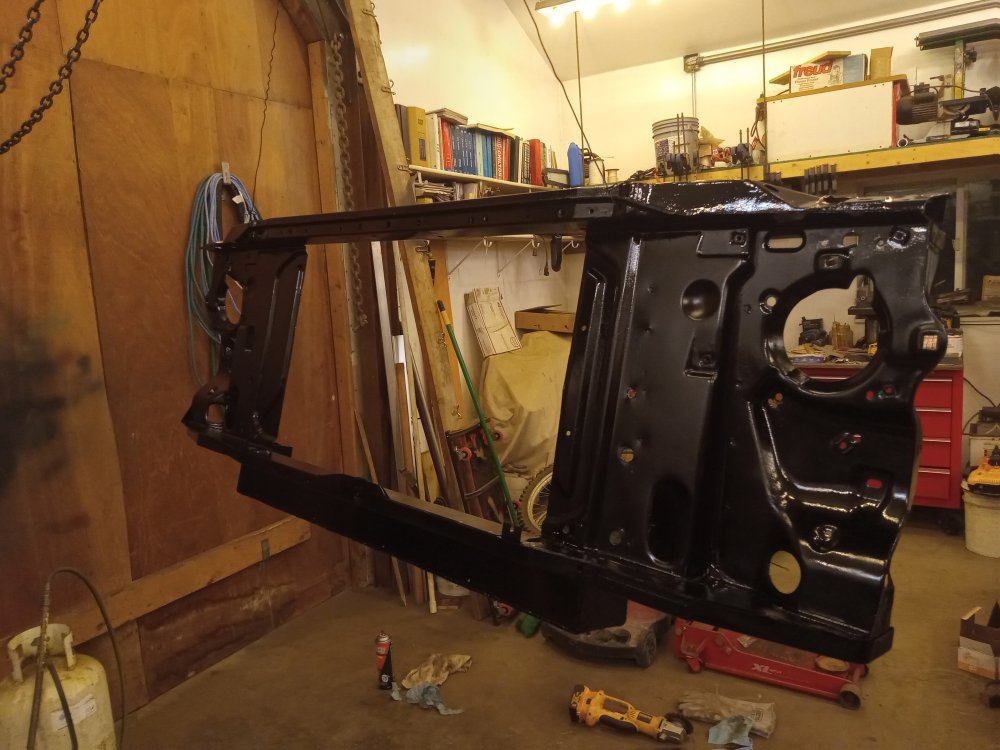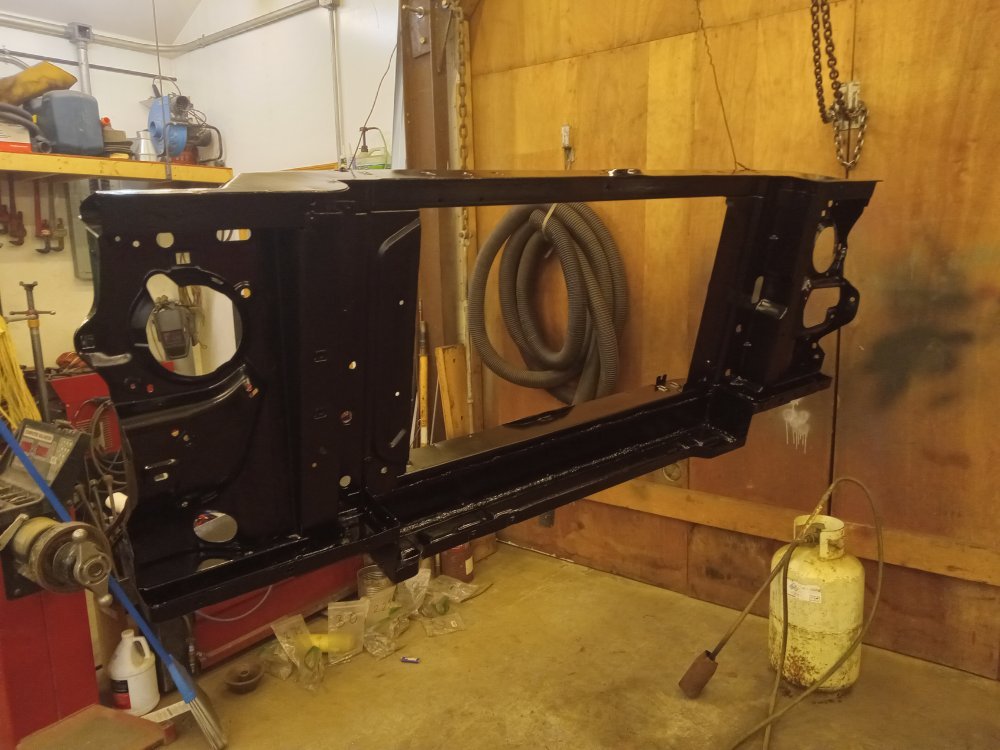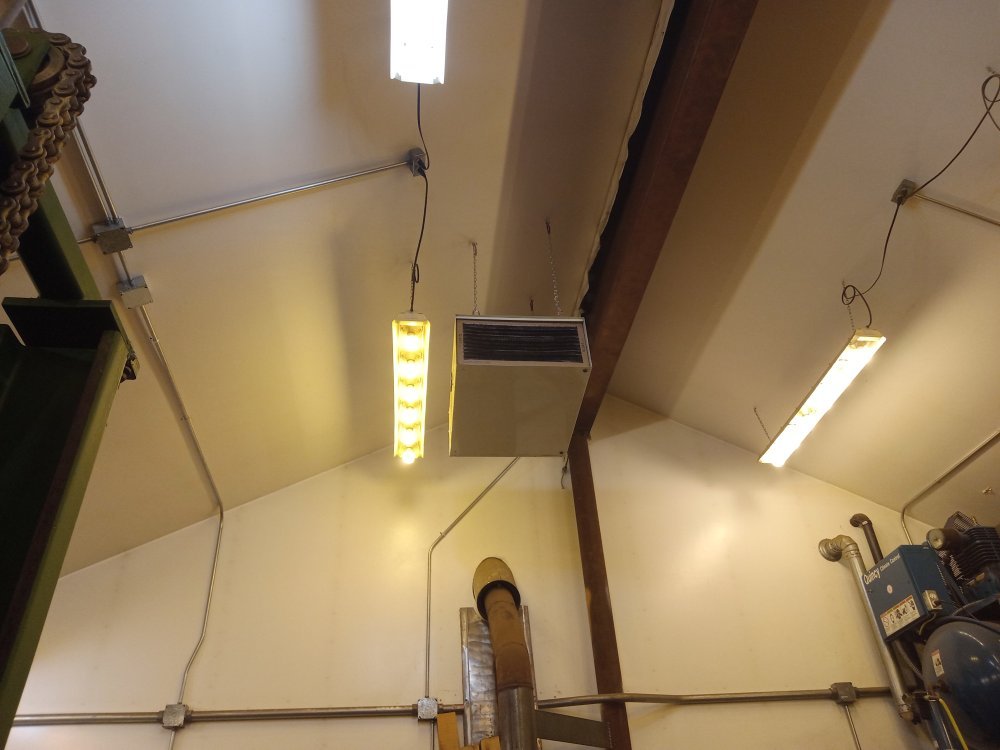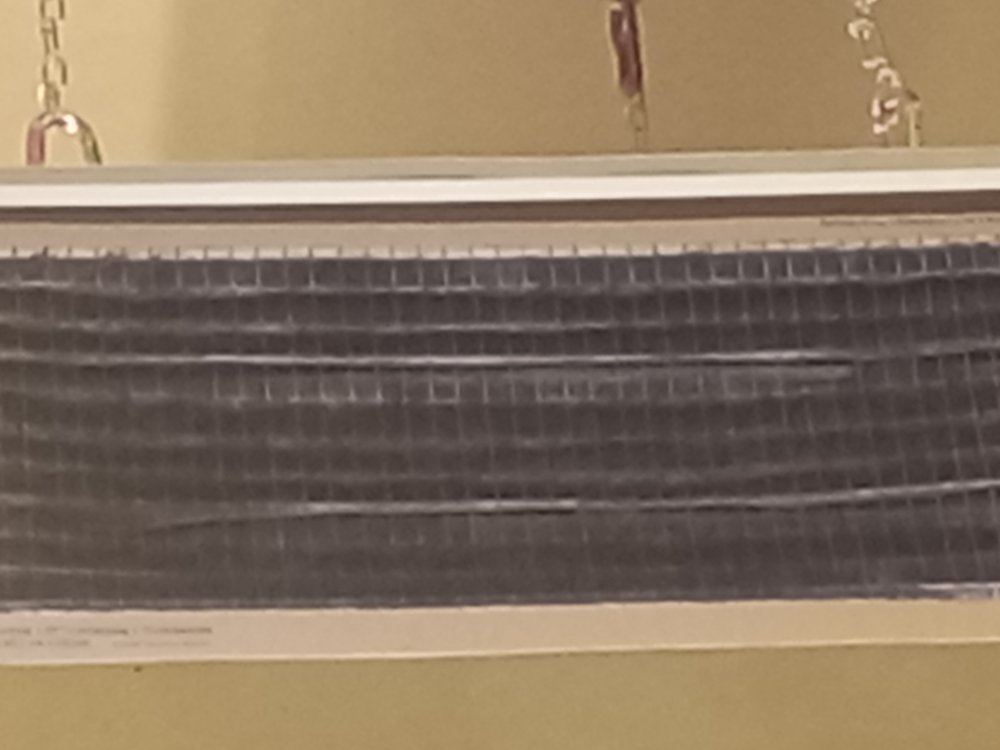If it ain't one thing it's another...
Navigation
Install the app
How to install the app on iOS
Follow along with the video below to see how to install our site as a web app on your home screen.
Note: This feature may not be available in some browsers.
More options
-
Welcome to The Truck Stop! We see you haven't REGISTERED yet.
Your truck knowledge is missing!
- Registration is FREE , all we need is your birthday and email. (We don't share ANY data with ANYONE)
- We have tons of knowledge here for your diesel truck!
- Post your own topics and reply to existing threads to help others out!
- NO ADS! The site is fully functional and ad free!
Problems registering? Click here to contact us!
Already registered, but need a PASSWORD RESET? CLICK HERE TO RESET YOUR PASSWORD!
You are using an out of date browser. It may not display this or other websites correctly.
You should upgrade or use an alternative browser.
You should upgrade or use an alternative browser.
My Shop
- Thread starter ak diesel driver
- Start date
dbrannon79
I'm getting there!
if it's not loosing any into the combustion chamber and you don't want to tear into it again, try the old farmers trick with liquid glass in the cooling system. don't use the stuff with all the copper and other muck in it, but you can find a mayo size jar of the stuff at walmart or any local pharmacy called sodium silicate. I used this once on a mazda engine that had a "going bad" head gasket but wasn't real bad. it sealed it up and lasted another year or so.
The trick is to drain all the coolant and add this with plain water. run it up to temp and then drain it out completely. leave for a couple days with the block empty to allow to dry. then refill with fresh coolant and new thermostat. (remove the thermostat before doing this)
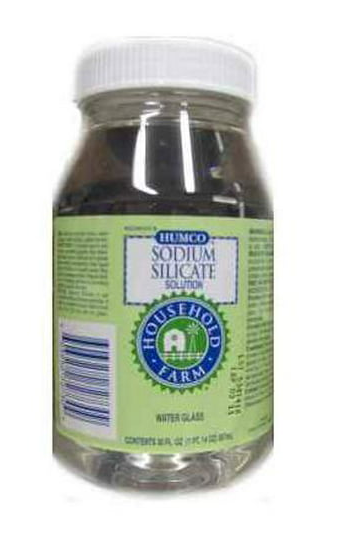
The trick is to drain all the coolant and add this with plain water. run it up to temp and then drain it out completely. leave for a couple days with the block empty to allow to dry. then refill with fresh coolant and new thermostat. (remove the thermostat before doing this)

ak diesel driver
6.5 driver
dbrannon79
I'm getting there!
Those are interesting shop light fixtures! looks like old 4' florescent fixtures with the old school ceramic screw bulb fixtures in them! gives a nice rustic look too!
ak diesel driver
6.5 driver
Yeah I modified them. Another of the compact fluorescent bulbs in there from when I put them together originally but am replacing them with leds as they burn out
n8in8or
I never met a project I didn’t like
Please report back on how it works, I could use something like that myself. If it works for you, then I'll have to keep my eyes peeled for something similar for myself.
jrsavoie
Recruit
You can make a filter bank and use a furnace ducted to an exhaust ventPlease report back on how it works, I could use something like that myself. If it works for you, then I'll have to keep my eyes peeled for something similar for myself.
Will L.
Well-Known Member
There is a trick for picking good LED.
Short answer:
Smart phones have under video recording a slow motion recording mode. Turn on the LED, record in slo mo for a couple seconds where there is no other light source, in box stores like home depot just hold phone close to the LED display. Play back video. If the light flickers- avoid it. If the light looks like it is just on (no flicker) then it is built well. Buy the ones that do not flicker. They last longer and better health for humans and animals.
Long (aka Will) answer
LED only work dc power, and obviously far less wattage which is how you save money on electricity.
Your house is ac power not dc so the unit has to both convert ac into dc and has to regulate the voltage down. This is called the driver. It can be built to do either one in either order. One way is cheaper, the other is better. I might have which order does what backwards. I read the details but work with big boy voltage not electronics. But understand the symptoms enough to qualify the detection.
When the ac-dc conversion is done first then it regulates the voltage, this eliminates that flicker that occurs so quickly you can’t see it normally. More in this part later about health. Now it controls the voltage in dc power. This is very stable and will keep the parts from failing soon. It is more expensive, and as you might guess they are building based on quality not cheaper so other components like the LED themselves are more likely to be better quality.
When built the other way the ac voltage is cyclical and causes that pulse or flicker. That is harder on the components and simply burns them out faster. This is the cheapest way to make a driver, and being a penny pinching application- one might expect lower quality components being used.
As to the health part: many here are old enough to remember people and animals having seizures from fluorescent lights, older TV screens and computer monitors. It was thought at the time only people with epilepsy were affected. But people without it frequently got headaches, severe increased vision problems, etc.
Turns out that pulse of light At special frequencies causes all kinds of problems. So they did tons of studies, outlawed certain refresh rates for monitors and tvs, outlawed certain fluorescent ballasts from being made, and problems got much less. Didn’t go away, just became rare. People working 40+ hours a week in fluorescent light still suffer ill effects but it is minor enough that we can’t blame all the damage on the lights alone. So lawsuits ended.
Well the flicker of these LED lights is a problem worse than modern fluorescents are. And some chinkadero companies don’t heed the frequency mandates and will sell lead in your biscuits because they don’t give a care. With no one watching every single brand- people are getting garbage here.
Talking with one electrical engineer at work who is from the land of plastic rice, they have massive issues there and can’t catch the companies. So the companies learn to sell out of chy-na ( pronounced like Trump did) and in EU, most those countries do the inspections and caught them, denying entry. But all through out the Americas- we don’t inspect so people are buying lights that create all kinds of havoc on humans, and animals.
This is a different topic but related.
For those who like to solder, build electronic stuff, something to consider.
Every time you convert energy from one form to another like ac to dc, you loose energy in the form of heat.
Rather than have a ton of tiny converters that are in each light bulb from ac to dc,
A person could use one 120v ac circuit from their shop- convert to a stable & clean dc power. Run separate circuit (wires) from switches (or dimmers) to light fixtures in dc, and build your own LED light fixture. Doing this, you will obviously choose better components, have only one driver to contend with, and have small fixtures that can light up the world it wanted. Cost of doing it is based on your diy abilities. Power consumption is less because you only have one point of conversion into dc.
Can you do it cheap enough to be worth it? Idk. Its like diy on a truck versus paying someone else to build it or fix it. Your individual skillset is the biggest factor.
Short answer:
Smart phones have under video recording a slow motion recording mode. Turn on the LED, record in slo mo for a couple seconds where there is no other light source, in box stores like home depot just hold phone close to the LED display. Play back video. If the light flickers- avoid it. If the light looks like it is just on (no flicker) then it is built well. Buy the ones that do not flicker. They last longer and better health for humans and animals.
Long (aka Will) answer
LED only work dc power, and obviously far less wattage which is how you save money on electricity.
Your house is ac power not dc so the unit has to both convert ac into dc and has to regulate the voltage down. This is called the driver. It can be built to do either one in either order. One way is cheaper, the other is better. I might have which order does what backwards. I read the details but work with big boy voltage not electronics. But understand the symptoms enough to qualify the detection.
When the ac-dc conversion is done first then it regulates the voltage, this eliminates that flicker that occurs so quickly you can’t see it normally. More in this part later about health. Now it controls the voltage in dc power. This is very stable and will keep the parts from failing soon. It is more expensive, and as you might guess they are building based on quality not cheaper so other components like the LED themselves are more likely to be better quality.
When built the other way the ac voltage is cyclical and causes that pulse or flicker. That is harder on the components and simply burns them out faster. This is the cheapest way to make a driver, and being a penny pinching application- one might expect lower quality components being used.
As to the health part: many here are old enough to remember people and animals having seizures from fluorescent lights, older TV screens and computer monitors. It was thought at the time only people with epilepsy were affected. But people without it frequently got headaches, severe increased vision problems, etc.
Turns out that pulse of light At special frequencies causes all kinds of problems. So they did tons of studies, outlawed certain refresh rates for monitors and tvs, outlawed certain fluorescent ballasts from being made, and problems got much less. Didn’t go away, just became rare. People working 40+ hours a week in fluorescent light still suffer ill effects but it is minor enough that we can’t blame all the damage on the lights alone. So lawsuits ended.
Well the flicker of these LED lights is a problem worse than modern fluorescents are. And some chinkadero companies don’t heed the frequency mandates and will sell lead in your biscuits because they don’t give a care. With no one watching every single brand- people are getting garbage here.
Talking with one electrical engineer at work who is from the land of plastic rice, they have massive issues there and can’t catch the companies. So the companies learn to sell out of chy-na ( pronounced like Trump did) and in EU, most those countries do the inspections and caught them, denying entry. But all through out the Americas- we don’t inspect so people are buying lights that create all kinds of havoc on humans, and animals.
This is a different topic but related.
For those who like to solder, build electronic stuff, something to consider.
Every time you convert energy from one form to another like ac to dc, you loose energy in the form of heat.
Rather than have a ton of tiny converters that are in each light bulb from ac to dc,
A person could use one 120v ac circuit from their shop- convert to a stable & clean dc power. Run separate circuit (wires) from switches (or dimmers) to light fixtures in dc, and build your own LED light fixture. Doing this, you will obviously choose better components, have only one driver to contend with, and have small fixtures that can light up the world it wanted. Cost of doing it is based on your diy abilities. Power consumption is less because you only have one point of conversion into dc.
Can you do it cheap enough to be worth it? Idk. Its like diy on a truck versus paying someone else to build it or fix it. Your individual skillset is the biggest factor.
Husker6.5
135' diagonal 16:9HD, 25KW sound!
The only problem you run into doing your own DC distribution system, @Will L., is the exact same one that Edison had with his DC power distribution systems that Tesla solved by creating AC power generation - and started the very public disputes/character attacks between the two, until the more efficient, cheaper AC system won out - that being voltage drop over distance that required power stations every half mile or so.
Now, in a situation like inside a shop where you may have at most a, say 30' run to the LED fixture, and the operating voltage of the LEDs inside the bulb/tube being what they are, you can get away with just running the next higher gauge or two of wiring - like using 14/2wG or 12/2wG instead of the 16/2wG like you would to a 2 lamp 4' fluorescent shop fixture - to minimize the voltage drop from the AC/DC converter to the devices.
Diesel/electric railroad locomotive builders such as GE and Alco finally dealt with this current & voltage vs. wire guage issue in the late 60's/early 70's when the demand for more powerful - but not larger - locomotives by the railroads increased. Their answer? To switch from the diesel engine driving a DC generator feeding through huge diameter cables (bigger than your upper arm!) to the DC motors mounted in the engine's trucks whose armatures were directly connected with the wheels at each end - to the diesel engine driving an AC alternator using MUCH smaller diameter (3/0 or 4/0) cables that can handle even higher amperage than the DC-based system (more amperage = more HP capability delivered to the electric motors, if the motors are designed to be higher HP) fed into AC electric motors. The difference in start up torque between DC (more) and AC (less) motors was easily solved by use of reduction gear boxes between the more compact AC motors and the truck's axles.
The diesel locomotive's AC drive system has proven to be superior to the old-school DC drive system in terms of weight, reliability, maintenance ease and fuel efficiency with over five decades of use.
My source for this information is rock solid. My childhood best friend just retired last year after 41 years with Burlington Northern Santa Fe doing nothing but electronics for them, after graduating from Southeast Community College top of his class with an Associates Degree in Electrical Engineering and hired two weeks before graduation by BN as an Assistant Signal Maintainer. He quickly worked his way up the job bid ladder, next repairing the radio equipment at the shop in Hobson Yards here in Lincoln, then bidding on and getting the job of installing and maintaining the communications system at the new Operations Center in Naperville, IL in the 1980's. He did that for about 20 years, but the having to be on call on his days off (the extra money was great being paid just to be available, but it meant no family time/social life because he had to be on standby and available on weekends and after hours, so it made it difficult to attend his kids' events, vacations, etc) just got to be too much, so he bid on and got the job as an Engine Electrician in the BNSF yards in Chicago about 15 years ago, which he retired from last year. That job entailed taking care of all electrical systems on the engine - drive power and control, radio/data communications both between engine units of a train and with the Operations Center, and remote diagnostics. He worked on both the last remaining DC powered units in BNSF inventory (mainly switch engines used in the yards) and all of their AC powered models of engines, including their newest. Did you know that the newest engines can self-diagnose and then by satellite communications relay that information to the Operations Center from anywhere in the US, and that instructions can then be sent back to the locomotive the same way? That a HUGE part of the threatened Railroad strike last year by the Engineers Union was because the Corporate Assholes were proposing UNMANNED freight trains, up to two miles long, ran by remote control by a computer hundreds or thousands of miles away - and it was BNSF, UP and Norfolk Southern proposing this, to "save operating costs and increase profits"!
Now, in a situation like inside a shop where you may have at most a, say 30' run to the LED fixture, and the operating voltage of the LEDs inside the bulb/tube being what they are, you can get away with just running the next higher gauge or two of wiring - like using 14/2wG or 12/2wG instead of the 16/2wG like you would to a 2 lamp 4' fluorescent shop fixture - to minimize the voltage drop from the AC/DC converter to the devices.
Diesel/electric railroad locomotive builders such as GE and Alco finally dealt with this current & voltage vs. wire guage issue in the late 60's/early 70's when the demand for more powerful - but not larger - locomotives by the railroads increased. Their answer? To switch from the diesel engine driving a DC generator feeding through huge diameter cables (bigger than your upper arm!) to the DC motors mounted in the engine's trucks whose armatures were directly connected with the wheels at each end - to the diesel engine driving an AC alternator using MUCH smaller diameter (3/0 or 4/0) cables that can handle even higher amperage than the DC-based system (more amperage = more HP capability delivered to the electric motors, if the motors are designed to be higher HP) fed into AC electric motors. The difference in start up torque between DC (more) and AC (less) motors was easily solved by use of reduction gear boxes between the more compact AC motors and the truck's axles.
The diesel locomotive's AC drive system has proven to be superior to the old-school DC drive system in terms of weight, reliability, maintenance ease and fuel efficiency with over five decades of use.
My source for this information is rock solid. My childhood best friend just retired last year after 41 years with Burlington Northern Santa Fe doing nothing but electronics for them, after graduating from Southeast Community College top of his class with an Associates Degree in Electrical Engineering and hired two weeks before graduation by BN as an Assistant Signal Maintainer. He quickly worked his way up the job bid ladder, next repairing the radio equipment at the shop in Hobson Yards here in Lincoln, then bidding on and getting the job of installing and maintaining the communications system at the new Operations Center in Naperville, IL in the 1980's. He did that for about 20 years, but the having to be on call on his days off (the extra money was great being paid just to be available, but it meant no family time/social life because he had to be on standby and available on weekends and after hours, so it made it difficult to attend his kids' events, vacations, etc) just got to be too much, so he bid on and got the job as an Engine Electrician in the BNSF yards in Chicago about 15 years ago, which he retired from last year. That job entailed taking care of all electrical systems on the engine - drive power and control, radio/data communications both between engine units of a train and with the Operations Center, and remote diagnostics. He worked on both the last remaining DC powered units in BNSF inventory (mainly switch engines used in the yards) and all of their AC powered models of engines, including their newest. Did you know that the newest engines can self-diagnose and then by satellite communications relay that information to the Operations Center from anywhere in the US, and that instructions can then be sent back to the locomotive the same way? That a HUGE part of the threatened Railroad strike last year by the Engineers Union was because the Corporate Assholes were proposing UNMANNED freight trains, up to two miles long, ran by remote control by a computer hundreds or thousands of miles away - and it was BNSF, UP and Norfolk Southern proposing this, to "save operating costs and increase profits"!
Will L.
Well-Known Member
Lighting load is far different than a motor.
National Electrical code says 14awg minimum already. 15 amps on dc - with the load that LED pull and not a built in transformer like each bulb has now- is massive
Most 60 watt equivalent LED bulbs use 30% of energy to light, 10% lost to heat in the electronics, the other 60% is lost to transformer loss and heat loss from that transformer.
I install commercial LED lighting. I can’t give examples because of job rules. And shocktricity isn’t something for an untrained person to get into. But i know some of yall are competent with it- but it isn’t common for people to do their own system- so thats why I mention it, so those who can do it will look into the option.
It’s like telling a group of truck owners they should look into replacing their intake, turbo and exhaust system for efficiency improvements. 98% of truck owners can’t fathom it. 1% could do some of it and might get it done. But the other 1% that could easily diy can benifit from it well. I’m not sure but guessing the fella who started this thread falls into that group that could diy it safely
National Electrical code says 14awg minimum already. 15 amps on dc - with the load that LED pull and not a built in transformer like each bulb has now- is massive
Most 60 watt equivalent LED bulbs use 30% of energy to light, 10% lost to heat in the electronics, the other 60% is lost to transformer loss and heat loss from that transformer.
I install commercial LED lighting. I can’t give examples because of job rules. And shocktricity isn’t something for an untrained person to get into. But i know some of yall are competent with it- but it isn’t common for people to do their own system- so thats why I mention it, so those who can do it will look into the option.
It’s like telling a group of truck owners they should look into replacing their intake, turbo and exhaust system for efficiency improvements. 98% of truck owners can’t fathom it. 1% could do some of it and might get it done. But the other 1% that could easily diy can benifit from it well. I’m not sure but guessing the fella who started this thread falls into that group that could diy it safely
ak diesel driver
6.5 driver
ak diesel driver
6.5 driver
ak diesel driver
6.5 driver
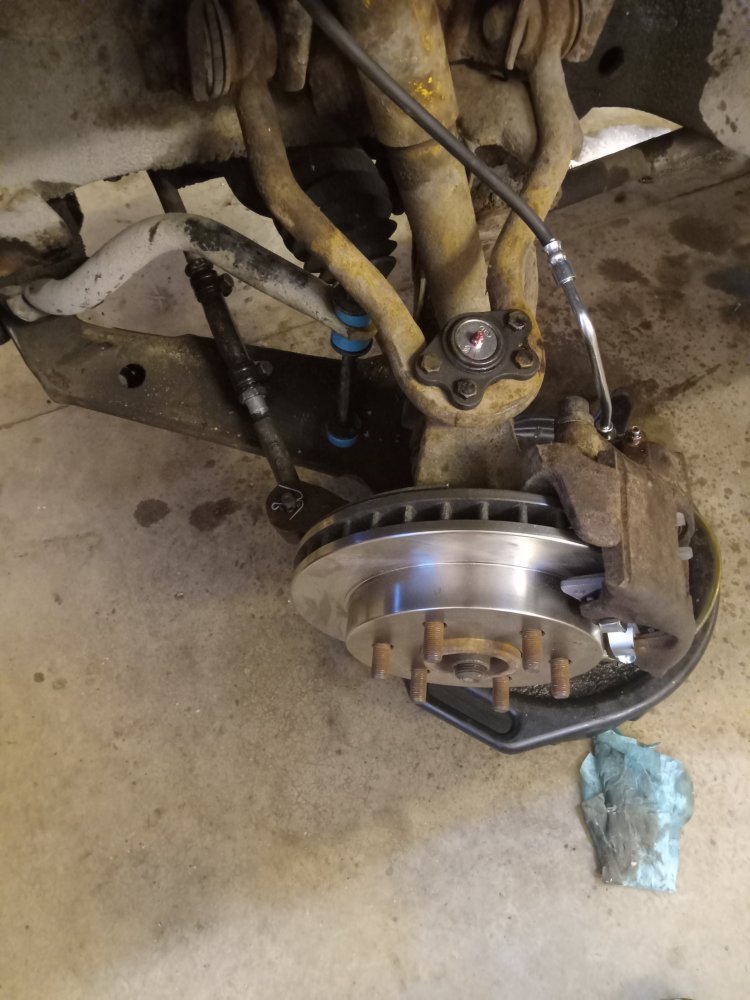
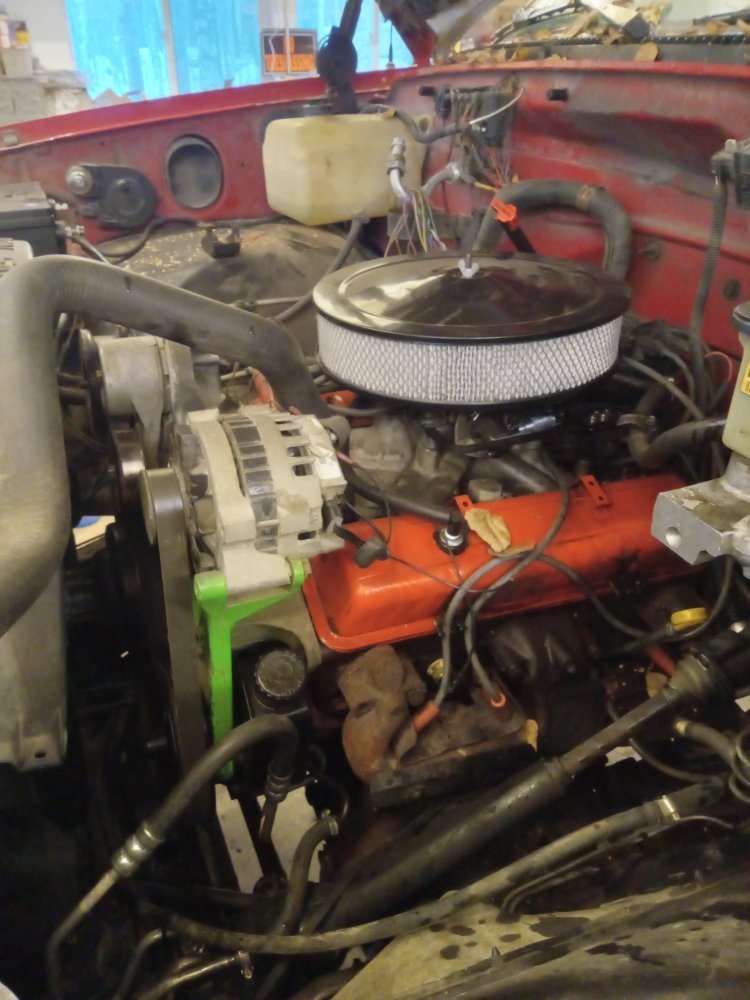
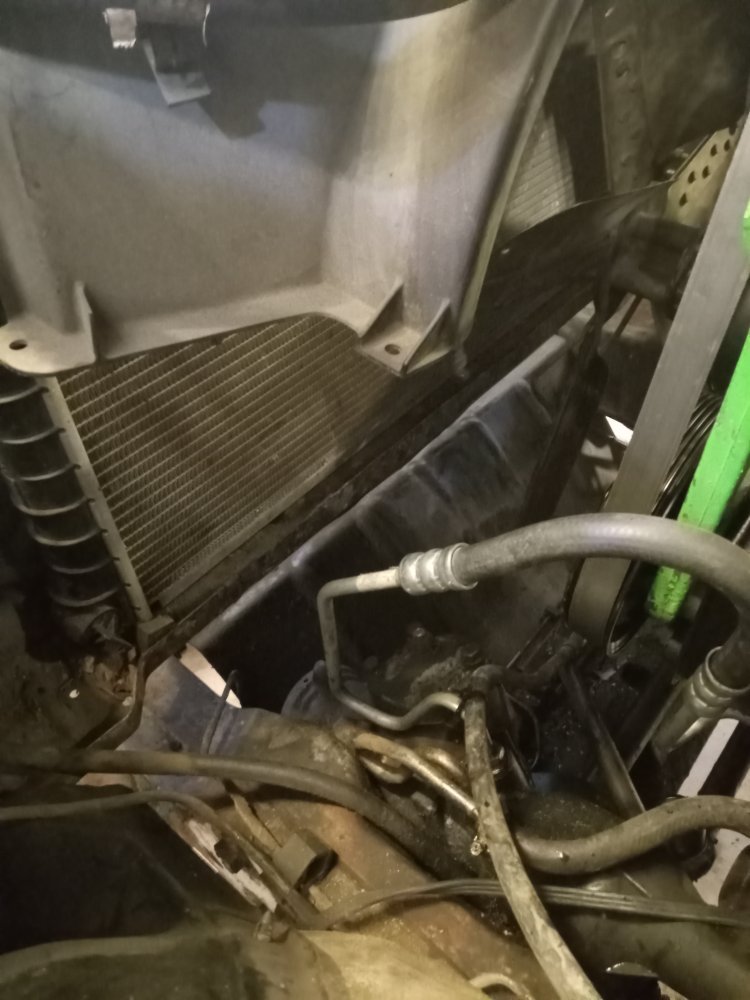
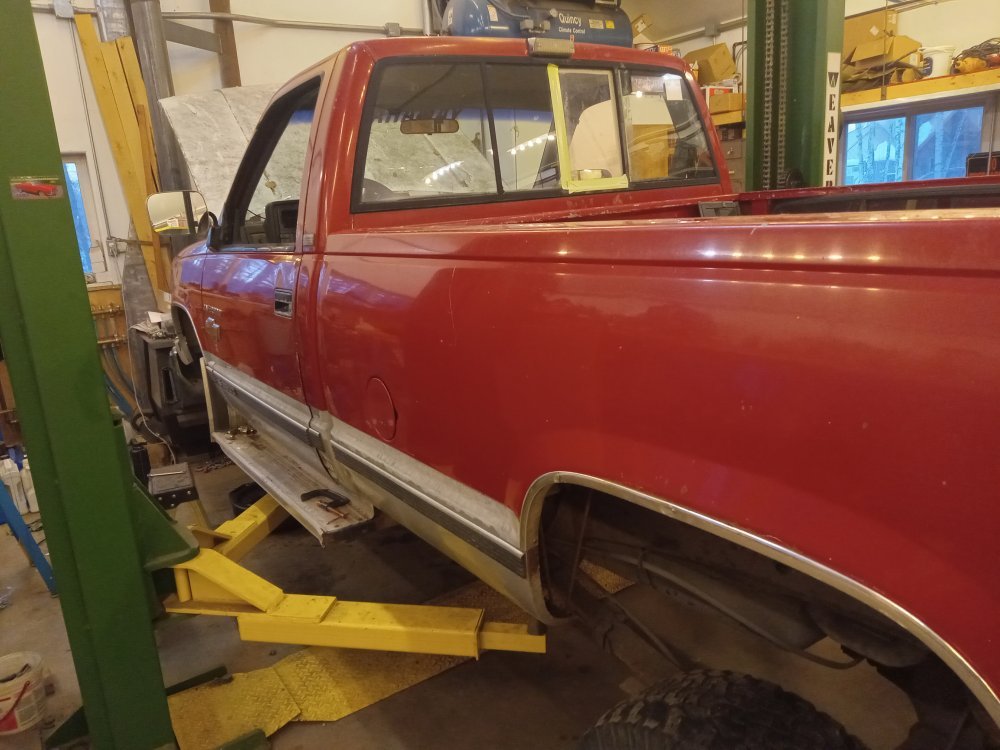 So you can see from the pictures why were doing the core support mod. We'll have to modify the upper fan shroud though. So far it's got all new steering parts and one new hub, we discovered the bad hub when doing brakes. Two new rotors, rebuilt the calipers and new brake hoses and of course new pads. The passenger side calipers was sticking and the rotor was very thin on one side. He got the truck for free off Craigslist but now has about $1200 into it. He was hoping for less then that but I tell him you could buy a truck for that and still have to fix all that. Oh we did buy a used 700r4 for it as the transmission was out but I'm not sure how long it will last so we may end up rebuilding one.
So you can see from the pictures why were doing the core support mod. We'll have to modify the upper fan shroud though. So far it's got all new steering parts and one new hub, we discovered the bad hub when doing brakes. Two new rotors, rebuilt the calipers and new brake hoses and of course new pads. The passenger side calipers was sticking and the rotor was very thin on one side. He got the truck for free off Craigslist but now has about $1200 into it. He was hoping for less then that but I tell him you could buy a truck for that and still have to fix all that. Oh we did buy a used 700r4 for it as the transmission was out but I'm not sure how long it will last so we may end up rebuilding one.n8in8or
I never met a project I didn’t like
Doesn’t seem bad at all for a $1200 truck.
ak diesel driver
6.5 driver
Husker6.5
135' diagonal 16:9HD, 25KW sound!
You'll just have to get out the step ladder and check/replace the filter(s) fairly frequently as the aerosols build up and dry on the filter media, eventually cutting off a significant amount of airflow.
Once you get a feel for how much spraying/grinding/sanding clogs up the element how fast, it'll become just another routine scheduled maintenance item.
Once you get a feel for how much spraying/grinding/sanding clogs up the element how fast, it'll become just another routine scheduled maintenance item.
Will L.
Well-Known Member
A trick for doing a lot of painting- first get sifted flour and give a handful to each filter.
No where near enough to plug obviously but a light dusting.
Then paint. The paint will stick to the dust and dry. Pull the filters and knock our the painted dust and the filters last a lot long.
Learned that from an old painter- he worked at a company that different painters rented out booths a year at a time and each guy had 2 work bays and a few outside parking spaces. A couple guys guys gave him a hard time and how he was gonna ruin paint jobs and was just going through filters faster. I guess around month #4, everyone was doing it. You just can’t turn off the fans until done painting. Idk if it will work with type of filter- but might be worth a shot
No where near enough to plug obviously but a light dusting.
Then paint. The paint will stick to the dust and dry. Pull the filters and knock our the painted dust and the filters last a lot long.
Learned that from an old painter- he worked at a company that different painters rented out booths a year at a time and each guy had 2 work bays and a few outside parking spaces. A couple guys guys gave him a hard time and how he was gonna ruin paint jobs and was just going through filters faster. I guess around month #4, everyone was doing it. You just can’t turn off the fans until done painting. Idk if it will work with type of filter- but might be worth a shot
jrsavoie
Recruit
Just don't stir up flour dust if there's an open flame.A trick for doing a lot of painting- first get sifted flour and give a handful to each filter.
No where near enough to plug obviously but a light dusting.
Then paint. The paint will stick to the dust and dry. Pull the filters and knock our the painted dust and the filters last a lot long.
Learned that from an old painter- he worked at a company that different painters rented out booths a year at a time and each guy had 2 work bays and a few outside parking spaces. A couple guys guys gave him a hard time and how he was gonna ruin paint jobs and was just going through filters faster. I guess around month #4, everyone was doing it. You just can’t turn off the fans until done painting. Idk if it will work with type of filter- but might be worth a shot
Kablooey.
jrsavoie
Recruit
I about screwed up big time.Yup, the reason why grain elevators suddenly explode. Something the Right and Left Coasters don't experience but us who live in the Grain Belt do, right @jrsavoie?
There was only 2 people working at an elevator I was working on. This was way before very little welding was allowed and you had to get a burn permit for everything.
I didn't lock out / tag out.
I told them no grain for 2 hours.
I was sitting on a pipe about 100' in the air welding a patch on and the leg started.
We usually poured a couple gallons of water down the pipes after I welded them.
Shortly after we quit doing weld on patches

